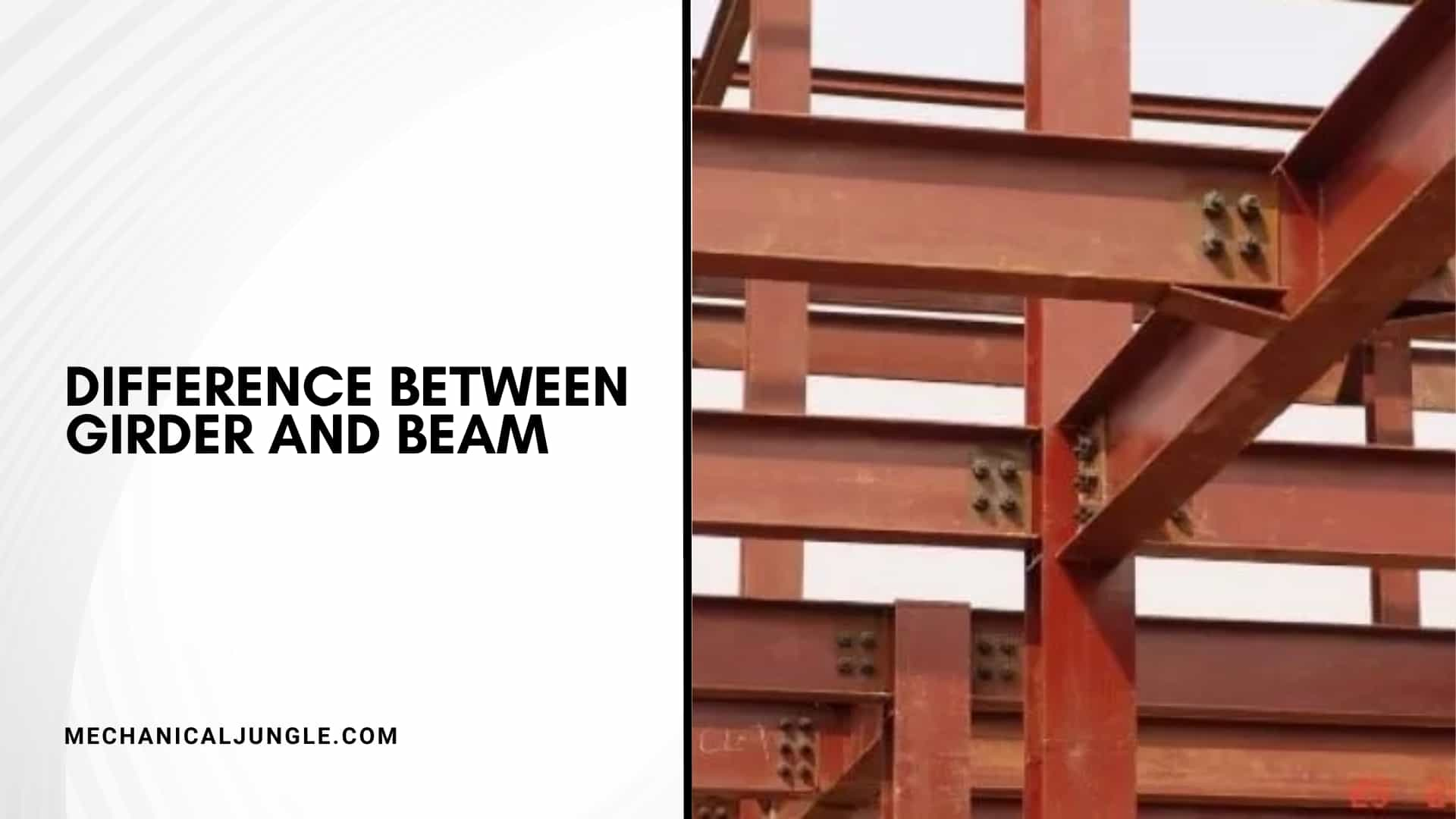

What Is a Beam?
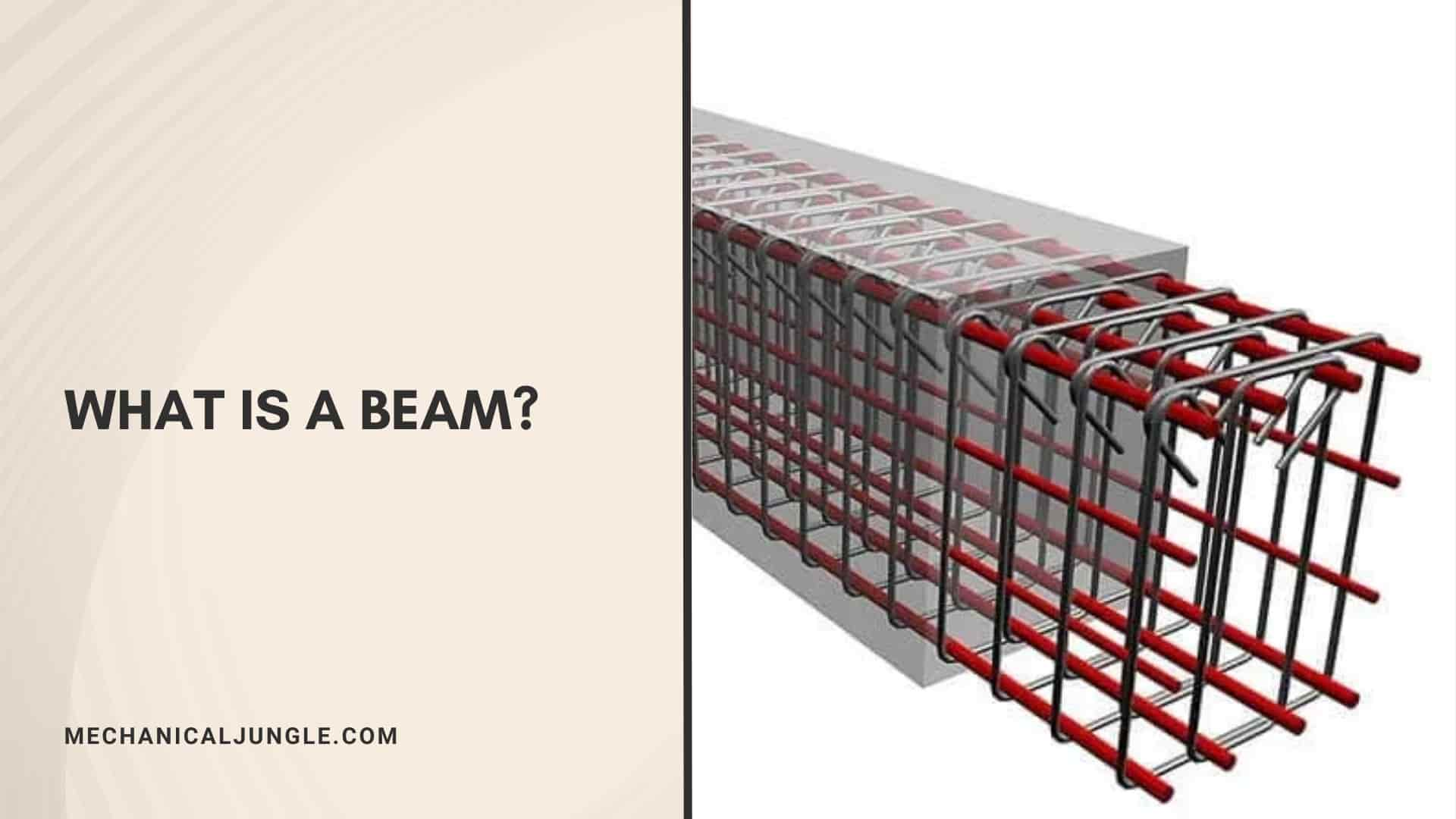

The beam is a primary part of a structural framing system specifically designed to carry distributed loads such as parallel walls or roof systems. The beam is one of the most commonly designed elements of a structure in engineering to resist load, & its primary mode of deflection is bending. It is mainly used to resist bending moments, vertical loads, and shear forces.
Thus, beams are defined by their bending moments that are calculated for the primary requirements to form the structure. In simple terms, any horizontal structural member that undergoes lateral loads and is able to sense the load is a beam.
Also, Read: Velox Boiler | Construction of Velox Boiler | Principle of Volex Boiler | Working of Volex Boiler
What Is Girder?


The girder is basically a beam that supports other small beams and serves as the main horizontal supports of a structure. Unlike beams, the girder is designed to support major concentric loads such as columns or beam reactions, and their load carrying capacity is much higher than that of beams.
It can be made from various building materials such as concrete, stainless steel, or a combination of both. It supports vertical loads & may consist of a single piece or multiple pieces.
Also, Read: Design of Knuckle Joint | What Is a Knuckle Joint? | Failure of Knuckle Joint
Difference Between Girder and Beam:
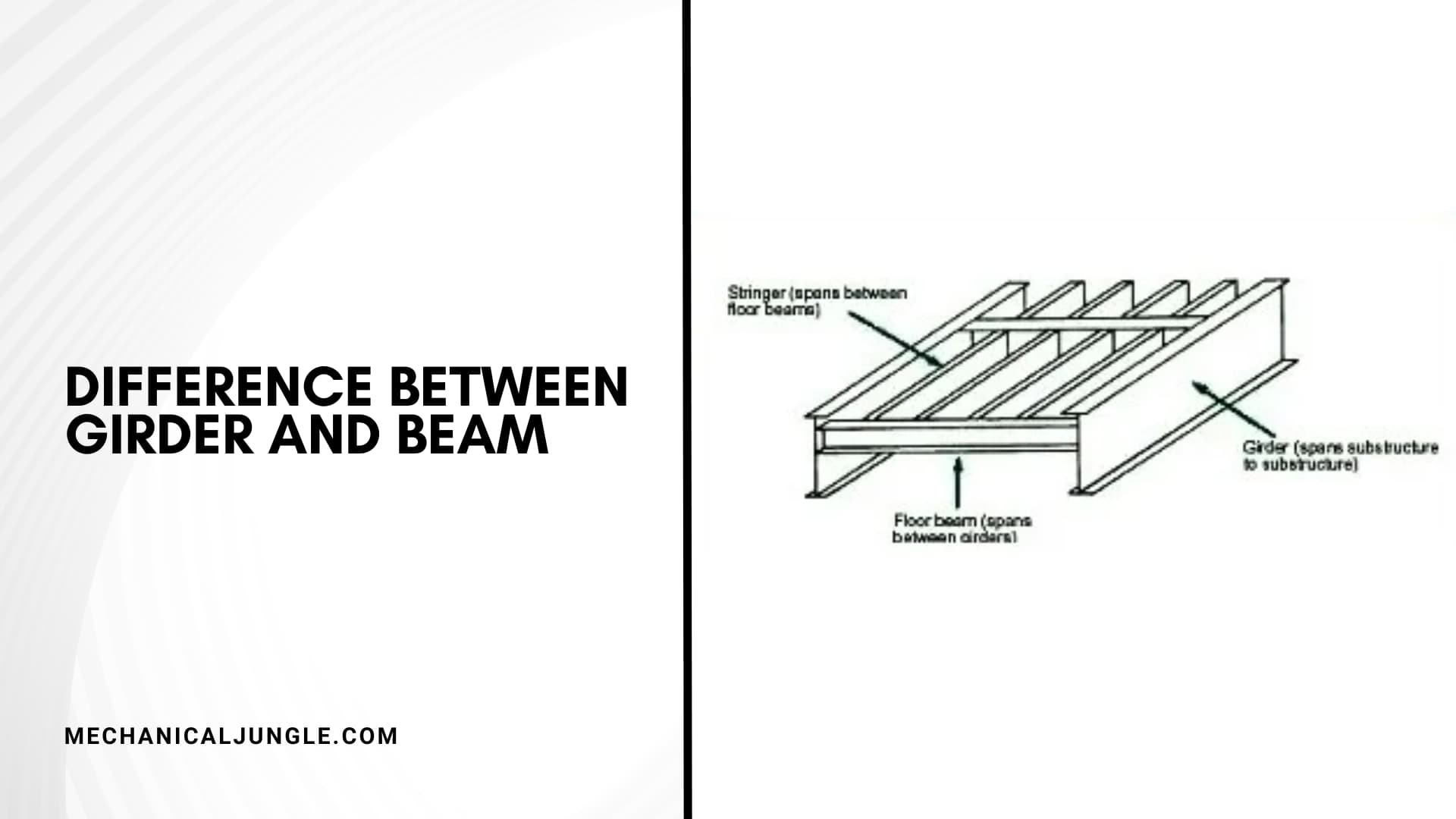

All structural materials for reinforced and standard acceptance tests for such materials are prescribed under the ACI (American concrete institute) code which is a leading authority for individuals and organizations involved in the inspection, project management, and construction and design.
ACI periodically revises its specifications to facilitate improvements in production methods, materials, and testing.
Beam and girder are two frequently used codes in structural systems, most notably in the 1995 ACI code. Both are subject to flexural load and serve as the primary part of the structural framing system. Both are horizontal members and are among the most designed elements of the structure.
The two-term are often used interchangeably, but some factors are different from each other. It is important to understand the difference between the two for the construction scene.
Also, Read: Parts of Slotter Machine | Types of Slotter Machine | Drive Mechanism of Slotting Machine | Slotter Machine Operations
#1. Beam Vs. Girder: Basics
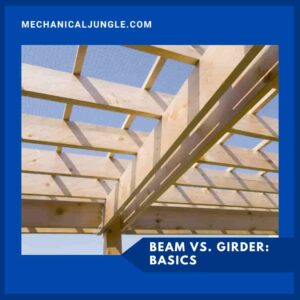

Basics of Beam: Beams are a primary part of structural framing systems designed to carry the distributed load of any structure. These are the most commonly designed elements of a structure to resist beam load because its primary mode of deflection is bending.
Basics of Girder: Girder is the type of beam that supports other small beams, thus acting as the main horizontal supports of a structure. Unlike beams, the girder is designed to support significant concentric loads such as columns or beam reactions.
The load-carrying capacity of the girder is much higher than that of the beam. This supports the vertical load of the beam.
#2. Beam Vs. Girder: Size
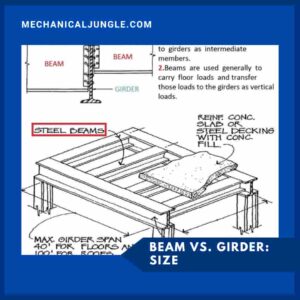

Size of Beam: Another difference between the girder & the beam is the size of the component. In the construction industry, large beans are called a girder. There is no strict length, width, or weight cut that decides whether it is a beam or girder.
Instead, builders decide how the component is used. If the component is small in size, it is a ray.
Size of Girder: All girders are beams because they are the main horizontal support structure for small beams. If the builder has used the component to support all other small beams, it is called a girder.
However, there are no strict rules in the Canadian national building code regarding the dimensions of the girder to be separated from the beam.
Also, Read: Steam Stop Valve in Boiler | Parts of Steam Stop Valve | Constructions of Steam Stop Valve | Working of Steam Stop Valve
#3. Beam Vs. Girder: Types
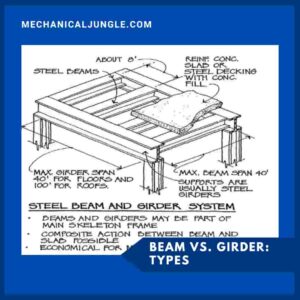

Types of Beam: Beams are classified into many different types on several factors. They are classified based on the kind of support the beam provides – simply supported, fixed, continuous, cantilevered, and trussed beams.
They are also classified on the geometric aspect as straight, curved, and tapered beams. Additionally, they are also divided into I-beam, T-beam, and C-beam.
Types of Girders: A girder is commonly used to refer to a steel beam. The most common girders used in any structural steelmaking project is the i-beam. Even box girder is mainly used in the construction of elevated bridges and roadways flyovers.
The box girders are made of two steel webs that connect together with the flanges at the top and bottom. This creates a closed cell that provides good torsional rigidity, the quality required for curved bridges.
#4. Beam Vs. Girder: Functionality


The functionality of Beam: Both components behave to resist bending forces. Beams typically have I-shaped cross-sections made of two load-bearing flanges and a web for stabilization. Beams support the structural integrity of buildings, which can be found on floors, walls roofs, roofs, and decks.
The functionality of Girders: The girder is a type that supports the beam and serves as the main horizontal support of the structure. Like beams, girders usually have similar-I shapes. They can carry a box or Z-shape as well as other types of designs.
Since the girders mainly support small beams and build bridges and flyovers, they are capable of lifting extremely heavy loads.
#5. Beam Vs. Girder: Fabrication
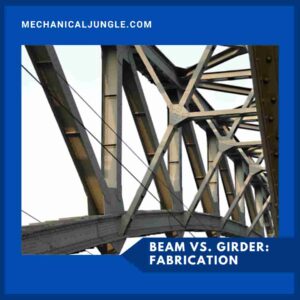

Fabrication of Beam: During the designing phase of the beam, fabricators should consider requirements such as holding the structure and transferring the load to the girder.
Custom steel beam fabrication is an efficient and cost-effective way to ensure that you receive the precise horizontal support structure in your horizontal steelmaking steel project.
Fabrication of Girders: On the other hand, fabricators carefully consider requirements such as girder construction, stability, deck placement sequence, plate sizing, welded connections, and flange. Girder fabrication can cost more than beam fabrication.
For a girder, you need a team of qualified structural steel fabricators to complete the industrial construction work of the girder.
Also, Read: What Is the Purpose of a Sine Bar? | Working Principle of Sine Bar | Construction of Sine Bar | Working of Sine Bar
#6. Beam Vs. Girder: Jobs


Jobs of Beam: A beam is a secondary beam or strainer. Its main function is to transfer the load to the girders. Bears bend to accommodate shear stresses.
Jobs of Girder: The girder is a primary beam. Its main functions are to transfer the load on the pillars on which it rests. Girders are more rigid to support smaller beams. Stiffeners support plating, girders support stiffener, or other girders.
#7. Beam Vs. Girder: Load-Bearing Capacity
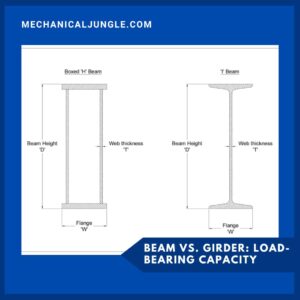

Load-Bearing Capacity of Beam: The beam can carry weight. But, when you compare it with girders, the capacity is very low in terms of structural design and capacity level of the component. Beads cannot hold the same weight that girders can hold.
Load-Bearing Capacity of Girders: Girders are designed to carry dynamic and rolling loads. Therefore, many builders mostly prefer girders for structural steel construction projects where loads are not very stable. When it comes to lifting dynamic loads, it refers to varying amounts of the force of the structure.
The reverse with a constant load, thus increasing the same force at all times. Therefore, you need a special type of beam to withstand dynamic loads that only girders can provide.
Also, Read: Sliding Mesh Gearbox | Parts of Sliding Mesh Gearbox | Construction of Sliding Mesh | Working of Sliding Mesh Gearbox
#8. Beam Vs. Girder: Summary
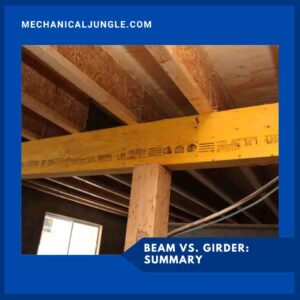

Summary of Beam: Beams are considered to be one of the most commonly designed elements of a horizontal structure, while girders are also horizontal members that support small beams but serve as the main support of the structure with dynamic load-bearing capability.
However, beams are known by alternative names based on their location in the system and the materials they use. For example, a basic floor joist is a beam that is lightly filled, and a roof joist is usually moved by a “rafter,” also a beam.
A beam that supports other small beams is commonly called a girder; while it is still a beam, its load-bearing capacity is much greater than a beam and is designed to support key parts of a structure.
Summary of Girders: Thus, girders are mainly used for the construction of bridges and flyovers, while beams are ideal for residential structures. In short, all girders are beams, but not all beams are necessarily girders.
Also, Read: What Is an Alternator in a Car? | What Does an Alternator Do? | How Does a Car Alternator Work? | Signs of Bad Alternator to Watch Out For
Frequently Asked Questions (FAQ)
Girder vs Beam
The main difference between a girder and a beam is the size of the component. In general, workers in the construction industry refer to large beams as girders. If it is the chief horizontal support in a structure, it is a girder, not a beam. If it is one of the smaller structural supports, it is a beam.
Difference Between Girder and Beam
The main difference between a girder and a beam is the size of the component. In general, workers in the construction industry refer to large beams as girders. If it is the chief horizontal support in a structure, it is a girder, not a beam. If it is one of the smaller structural supports, it is a beam.
Difference Between Girder and Beam
Beams are intended to bend to resist and redistribute the load. Girders, on the other hand, are more rigid, as they are there to support the beams and provide the main horizontal support for the structure. The girder is built to support significant, all-encompassing loads such as structural pillars or beam responses.
Girder vs beam vs joist
They are designed to complement one another. Joists are used under floors and ceilings for support. Beams are used for carrying the loads from joists and transferring them to either columns or girders. Girders are used when there is too much load to be resisted and transferred.
Girder vs joist
Joists are relatively a lot smaller as compared to girders. Joists transfer the load onto the beams and girders carry the load from the beams. Joists are usually used in small-scaled buildings and houses. The maximum spans offered by engineered wood joists are typically around 60′.
What Is Beam?
- In structural engineering, a beam is a horizontal or sloping structural element that is designed to support vertical loads. Beams are commonly used in building construction to support floors, roofs, and other parts of the structure.
- In physics, a beam refers to a stream of particles (such as electrons, protons, or photons) that are traveling in the same direction with approximately the same velocity. Beams are used in a variety of applications, such as particle accelerators, X-ray machines, and lasers.
- In communication, a beam can refer to a narrow directional radio wave or laser beam that is used to transmit signals over long distances with minimal interference.
- In computer science, beam can refer to a search algorithm used in natural language processing and machine translation. The algorithm evaluates all possible translations of a sentence and selects the most likely translation based on a probability score.
Girder Beam
Girders are large horizontal beams that act as the primary support for a building, to which all other smaller beams are connected, forming the structure’s “skeleton.” That’s the easiest way to picture the difference: girders are oversized beams. In fact, all girders are beams, but not all beams are girders.
What Is the Beam?
As mentioned earlier, “beam” can have different meanings depending on the context. If you are referring to the beam in a structural engineering context, it typically refers to a horizontal or sloping structural element that is designed to support vertical loads. Beams are commonly used in building construction to support floors, roofs, and other parts of the structure.
What Is a Girder in Construction?
Girders are the main supports of a large structure and will support the smaller beams. Girders are intended to be the primary structural supports, and they have a much larger load-bearing capability. They can carry dynamic and rolling loads.
Girder in Construction
In construction, a girder is a large horizontal or sloping beam that is used to support other structural elements, such as floor or roof systems. Girders are typically made of steel or reinforced concrete and are designed to carry heavy loads over long spans.
Girder in Civil Engineering
In civil engineering, a girder is a large horizontal or sloping structural element that is used to support other structural elements, such as floors, roofs, and bridges. Girders are typically made of materials such as steel or reinforced concrete and are designed to carry heavy loads over long spans.
Structural Girder
A girder (/ˈɡɜːrdər/) is a support beam used in construction. It is the main horizontal support of a structure which supports smaller beams. Girders often have an I-beam cross section composed of two load-bearing flanges separated by a stabilizing web, but may also have a box shape, Z shape, or other forms.
Beam and Girder System
Beams are the primary part of the structural framing system that will carry the load. Beams are intended to bend to resist and redistribute the load. Girders, on the other hand, are more rigid, as they are there to support the beams and provide the main horizontal support for the structure.
I Beam Girder
A girder is typically used to refer to a steel beam. I-beam girders are the most common type of girders used in bridge construction. Box girders are mainly used in construction of elevated bridges and roadway flyovers.
Girder Steel Structure
A girder in a steel structure is a horizontal or sloping structural element made of steel that is used to support other structural elements, such as floors or roofs, over a long span. Steel girders are commonly used in building construction, bridge construction, and other large structures, due to their strength, durability, and versatility.
Like this post? Share it with your friends!
Suggested Read –
